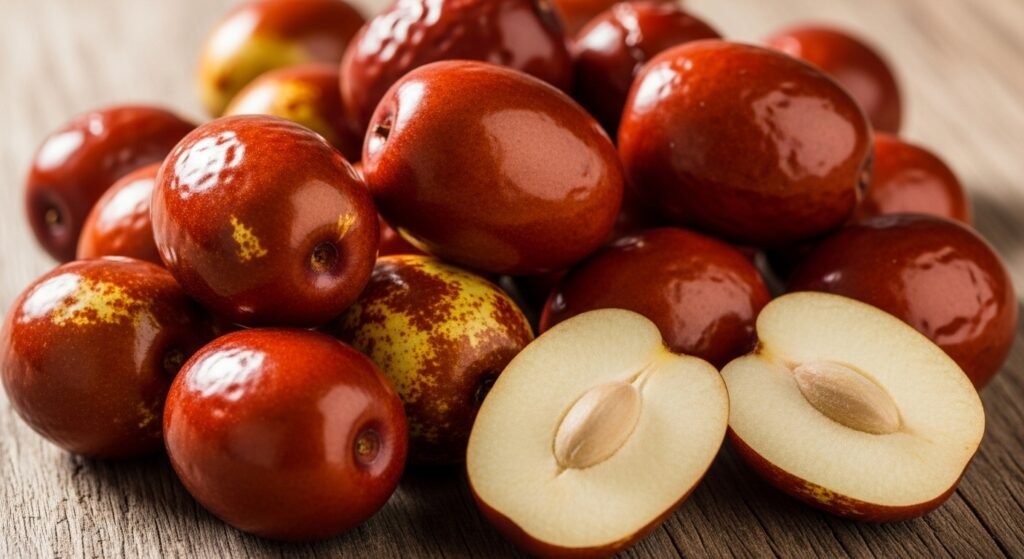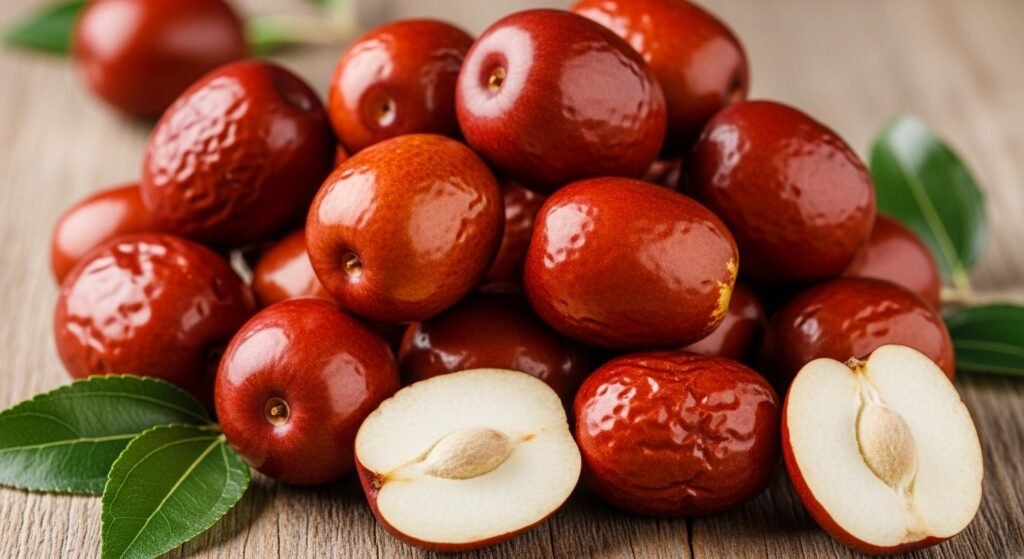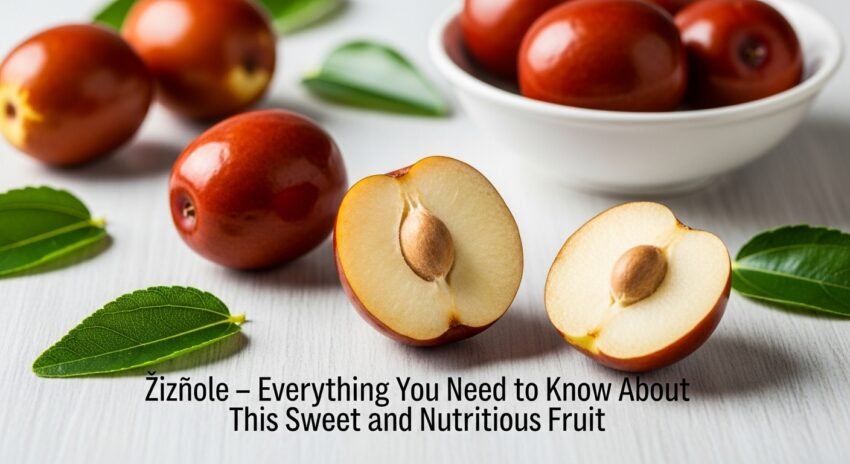Table of Contents
Introduction
If you’ve never heard of žižole before, don’t worry—you’re not alone. Žižole are the fruit of a small tree that might look simple at first, but they’re filled with flavor, history, and health benefits. Known in English as jujube or Chinese date, žižole have been around for thousands of years and are now becoming more popular around the world. They look like small apples, taste a bit like dates when dried, and offer a sweet crunch when fresh. These bite-sized fruits are great for snacking, cooking, and even making tea. With a chewy texture, natural sweetness, and plenty of nutrients, žižole are loved by health-conscious eaters, home gardeners, and traditional medicine enthusiasts alike. In this article, we’ll explore what žižole are, where they come from, how to grow them, how to enjoy them, and why they might just become your new favorite fruit. Let’s take a closer look at why people everywhere are falling in love with žižole.
The Origins of Žižole
The story of žižole begins thousands of years ago in Asia, where the plant has been part of traditional diets and medicine. Also known as Ziziphus jujuba, the tree that produces žižole is native to China, but it has spread to regions like the Mediterranean, the Balkans, and parts of the Middle East. Over time, traveling merchants, farmers, and herbalists brought the fruit to Europe, where it gained new names, growing styles, and local uses. Žižole trees are well known in places like Dalmatia, Southern Italy, and parts of Slovenia and Croatia. In these areas, people have grown, harvested, and dried žižole for generations. The fruit became a staple in households for its long shelf life, sweet flavor, and ability to grow well in dry conditions. The long history behind žižole gives them more than just flavor—they carry with them stories of trade, culture, health, and tradition from every corner of the world.
What Do Žižole Look and Taste Like?

Many people who try žižole for the first time are pleasantly surprised by their appearance and taste. When fresh, žižole are small—usually about the size of a plum or large olive. They have smooth, shiny skin that starts green and turns reddish-brown as they ripen. At first glance, they may remind you of small apples. The taste of žižole depends on their stage of ripeness. When still firm and green, they are crisp, slightly tart, and juicy. As they ripen and turn darker, they become sweeter and their texture grows softer, like a chewy date. Dried žižole are even sweeter and are often used in teas, baked goods, or eaten on their own as a natural snack. Whether you enjoy them crunchy and fresh or chewy and dried, žižole offer a unique flavor experience you won’t forget.
Health Benefits of Žižole
One of the biggest reasons why žižole are gaining popularity is because they’re incredibly good for you. These fruits are packed with vitamins, including vitamin C, B-complex vitamins, and minerals like iron, calcium, and potassium. They are also full of antioxidants, which help protect your body from damage caused by stress, pollution, or aging. People who eat žižole regularly often say that they feel more energized, sleep better, and even notice their skin looks healthier. In traditional medicine, especially Chinese and Middle Eastern healing traditions, žižole are used to calm the mind, support digestion, and improve immune strength. While they’re not a magic cure for everything, adding žižole to your meals might be a simple and tasty step toward better health. Think of them like a natural vitamin you can snack on.
How to Eat Žižole
You can enjoy žižole in many different ways. Fresh žižole can be eaten raw—just wash them and take a bite. The skin is edible, but be careful of the small, hard seed inside. If you like them crunchy, go for the green to yellow stage. If you like something sweeter and softer, wait until the skin turns reddish brown. Dried žižole are a whole other experience. You can eat them like dried dates or figs, mix them with nuts, or toss into trail mix. They add a chewy sweetness to breakfast oatmeal, yogurt bowls, or desserts. In some cultures, žižole are turned into jams, syrups, or even fermented into vinegar or wine. Another popular way to use them is in tea. Just drop a few dried žižole into hot water with ginger or herbs—it makes a calming, sweet drink that’s great before bed. However you enjoy them, žižole are easy to include in your daily routine.
Growing Žižole at Home

Did you know you can grow your own žižole tree at home? It’s easier than you might think. Žižole trees are known for being tough and drought-tolerant, which means they don’t need much water once they are fully grown. They love warm, sunny areas and can handle poor soil too. You can grow them in the ground or in large pots, depending on your space. A healthy žižole tree can start producing fruit within three to five years, and they often provide more than enough fruit for one household. In the fall, the fruit ripens all at once, giving you a big harvest over a short period. They’re also beautiful trees, with shiny green leaves and knobby branches. If you like gardening or just want fresh fruit in your backyard, planting a žižole tree could be a fun and rewarding activity.
Žižole in Traditional Medicine
For centuries, people have turned to žižole not just as food, but as a form of natural medicine. In Chinese culture, the fruit is often boiled in soups and teas meant to reduce anxiety, fight fatigue, and aid digestion. It’s believed they help balance the body, calm emotions, and recover from stress. In other parts of the world, like the Middle East and parts of Europe, žižole have been used in folk medicine to help with colds, sore throats, or sleeping troubles. The high vitamin content supports the immune system, while the sweet flavor makes them easy to include in natural remedies. Today, health experts are taking a fresh look at žižole as interest in plant-based wellness grows. While you should always consult a doctor for serious conditions, adding žižole is one way to boost your health naturally and gently.
The Cultural Meaning of Žižole
Beyond their taste and health perks, žižole carry cultural meaning in many parts of the world. In countries like China, Korea, and Japan, jujubes (žižole) are symbols of good luck, kindness, and happiness. They are used in weddings, offerings, and holiday meals to bring joy and peace to the home. In the Balkans, žižole are part of small-town traditions. Fall festivals often include baskets full of fresh žižole, and older generations speak fondly of picking the fruit as children. Sharing žižole often means sharing friendship, comfort, and memories. For so many people, žižole represent more than food—they represent home, seasons changing, and the simple pleasures of life. Whether you enjoy them now or remember them from family stories, žižole often carry deep emotional meaning.
Žižole Recipes You Can Try
Because they’re so tasty, and easy to pair with other ingredients, žižole make great additions to many recipes. If you’re trying them for the first time, start with a simple žižole tea. Just add a few dried žižole to boiling water, let it steep for 10 minutes, and add a slice of ginger and a spoon of honey. This relaxing drink helps soothe your mind and body. For snacks, mix chopped žižole into trail mix, granola bars, or even muffins. They provide a mild sweetness that works well with oats, nuts, and seeds. In main dishes, you can add žižole to rice or couscous for a touch of flavor. If you enjoy making jam, žižole are perfect for a homemade fruit spread that’s rich and thick. Their natural sugar makes them ideal for desserts without needing lots of added sugar.
Storing and Preserving Žižole
One reason žižole have remained so popular for centuries is because they store very well. If you pick or buy them fresh, you can keep them in your fridge for up to two weeks. Keep them in a paper bag or produce drawer to avoid moisture build-up. For longer storage, drying is the best option. You can dry žižole by leaving them in the sun, using a dehydrator, or baking at a low oven temperature. Once dried, they last for months or even years if stored in an airtight container. This long shelf life makes žižole perfect for winter snacks, road trip food, or emergency pantry staples. Try making your own dried žižole and see how convenient they are to enjoy all year round.
Žižole vs. Dates: What’s the Difference?
People often compare žižole and dates, but there are some big differences. Žižole are smaller, lighter in flavor, and have a firmer texture when fresh. Dates are usually stickier, much sweeter, and grow mostly in large clusters on palm trees. Both are rich in nutrients and fiber, but žižole have slightly fewer calories and a lower sugar content in their fresh form. Žižole are also more versatile in taste—they can be eaten green for crunch or brown for chewiness, while most people only eat dates in their fully ripe, sticky stage. While both have their fans, if you’re looking for something new, lighter, or easier to grow at home, žižole might be the fresh choice you need.
Where to Find Žižole Today
If you’re ready to try žižole, you may be wondering where to find them. Depending on where you live, fresh žižole may be sold at local farmers’ markets during late summer and fall. In Asian markets, you’re likely to find both the fresh and dried version all year round. Health food stores and specialty grocery shops may also carry dried žižole in the snack or supplement section. Online, many websites offer high-quality dried žižole for delivery. Just search for “dried jujube” or “žižole fruit.” Some gardening centers may even sell žižole trees or seeds, giving you a chance to grow your own. With more people exploring traditional foods and healthy snacks, žižole are becoming easier to find than ever before.
FAQs
What are žižole?
Žižole are small, sweet fruits from the Ziziphus jujuba tree, often called jujube or Chinese date.
Are žižole good for your health?
Yes, žižole are full of vitamins, minerals, and antioxidants that support energy, digestion, sleep, and immunity.
Can you grow žižole at home?
Yes, žižole trees are hardy and easy to grow in warm, sunny areas with little water.
How do you eat žižole?
You can eat them fresh, dried, cooked in recipes, or even brewed into sweet, calming tea.
Where can I buy žižole?
You can find žižole in Asian grocery stores, farmers’ markets, health food stores, and online.
Are žižole the same as dates?
No, although they are often compared, žižole and dates differ in taste, size, texture, and sugar levels.
Conclusion
Now that you know the story, taste, uses, and value of žižole, it’s easy to see why they’ve stood the test of time. This little fruit offers so much—from health improvements to cultural richness to simple enjoyment in every bite. Whether you snack on them fresh, sip them in tea, or grow your own žižole tree, you’re becoming part of a tradition that stretches across generations and continents. Žižole may be small, but their impact is big. Give them a try, share them with friends and family, and enjoy everything this beautiful fruit has to offer. One taste, and you may wonder how you ever lived without them.
